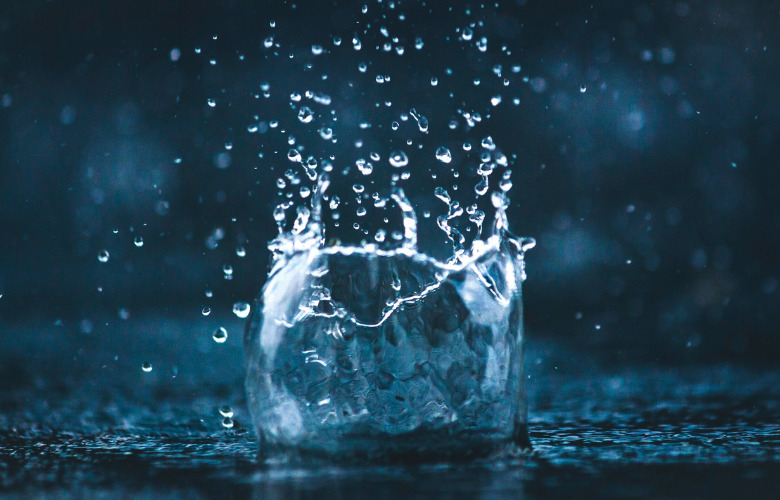
Nearly every culture has stories, myths, legends, and spiritual illuminations revolving around water that explain natural phenomena or explore epic questions of faith. Water is inherently transformational. It moves from solid to liquid to gas. Theatre is also transformational. One could say it is the art of watching people change. Throughout history, there has been a natural marriage between water and theatre.
Water is an essential life source. On a fundamental level, we cannot survive without access to water.
Consequentially, many of the great civilizations have sprung up on riverbanks or coastlines. Reliant on the flow of rivers and oceans for food, transportation, and trading. A trend that remains true for countless cities today.
But even as we depend on water in this very practical way, it also contains a sacred significance. A spiritual as well as cultural one.
For much of ancient history, performance evolved in conjunction with spiritual practice. Theatre was based more in spectacle than narrative and sought to build a bridge between the myths and holy texts that guided people and societies.
The communal nature of these performances similarly created connections between performers and citizens and their spiritual practice.
Because of the essential role that it played in many of these early societies, and its religious links with gods, water became a key component of early performance.
In early performance rituals, artists utilized elaborate costumes, impressive orchestrations, and large-scale choral storytelling to embody the epic nature of water.
In ancient China, Nine Songs, a compilation of poems that dramatized shamanic addresses to deities, was one of the earliest documented “scripts” as performers sought to open a direct line to several gods, many of whom controlled water sources.
While no written account of these performances has been found, stage directions in the Nine Songs text alludes to ambitious production quality.
In India, for example, traditional Hindu dances staged the origin story of the holy Ganges River. In these enactments, performers used their art to reimagine the written legends of their own holy texts in different capacities. Often combining narration and music with specific traditional choreography to create a storyline.
While different in intent, early Chinese and Indian cultures used performance to highlight the deep importance of water to their livelihoods, both spiritual and practical.
The prominent presence of water in mythology made its way into ancient Greek theatre, where Western drama and literature was born.
Much like the ancient performance practices in the East, the Greeks also focused on the epic nature of water, but in addition began to explore the metaphor more deeply.
From the theatre on the Acropolis in Athens, audiences could see the city’s harbour and the horizon over the Mediterranean.
Plays performed there would align the entrance of sea-faring characters or deities against this backdrop. Sometimes, performances would use an orchestra near the stage’s edge to represent water, building sounds to echo the intensity of the turmoil of storms and the passion of the gods.
Records suggest that members of the chorus in some productions would pour jugs of water over other characters to symbolize moments of catharsis. This blend of metaphor and spirituality provided a framework that shaped the future of staging with water.
In Elizabethan England, playwrights like Shakespeare attempted to reinvent what was possible onstage. Creating vivid moments of spectacle in their work.
One iconic example of this was their theatricalization of storms. Elizabethan playhouses were often outfitted with fireworks or thunder sheets to create thunder and lighting.
For particularly intense moments, a cannonball might be pushed down a wet wooden trough, and fabric was often used to both create the sounds of wind and signify the vastness of seas.
In Shakespeare’s later work, such as Pericles, Prince of Tyre and The Tempest, water played an important role. Not only in inventive ways of staging the spectacular, but also in the lyrical threading of images throughout the text.
Regarded as romances, these two plays in particular told stories of love and loss and forgiveness. Sparked by the power of the ocean to reunite past and present. From storms and seas to teardrops, his characters were fundamentally changed by water in its many forms.
In the early 1800s, artists and entrepreneurs worked together to create a new genre of theatre that pushed the theatricality of water to the limits: Aqua Drama.
These shows were set in giant onstage pools and depicted famous naval battles and similar aquatic events.
Leaders of the Sadler’s Wells Theatre in London installed a 90- by 24-foot pool, three-feet deep, where a stage might traditionally sit.
In their opening production, which brought the Great Siege of Gibraltar to life, the team created 177 miniature ships, all with working guns, to mimic the events of the real-life battle.
Back then, the genre really only gained popularity in England and France, feeding on the burgeoning sense of nationalism to create explosions of pride during the events themselves.
As the Napoleonic Wars reached their peak and the countries became fatigued, even the fantastic nature of Aqua Drama was no match. The genre faded, though echoes were seen in several later productions in New York circus arenas that similarly staged spectacle in pools, attempting to enthral audiences with the seemingly infinite possibilities of the new century.
After the birth of theatrical realism in the late 1800s, the exhibitionist nature of past plays subsided, giving way to living room plays and workplace dramas.
The use of water onstage was generally reserved for literal situations such as a working sink or the pouring of tea.
But as contemporary artists seek to push the boundaries of what is possible onstage, water in theatre has made a comeback, both in classic adaptations and entirely new stories. The combination of advances in technology and the power of metaphor has resulted in some remarkable productions.
Two plays from the 2000s used water onstage as a representation of passionate emotion: Sarah Ruhl’s Eurydice (seen at Berkeley Rep in 2004) and a production of Romeo and Juliet in Central Park’s Delacorte Theatre (2007).
At the start of Eurydice, the title character finds herself in an elevator, and it’s raining. In Ruhl’s typical poetic style, this wet elevator’s descent to the underworld mirrors the experience of the dead crossing the River Styx toward Hades.
Scenic designer Scott Bradley noted: “Water represents unstoppable tears, just unstoppable tears that you can’t imagine being able to swim out of.”
As each character enters the underworld for the first time, the water raining inside the elevator transforms them into a new version of themselves, unable to recall the past and forced to reconcile with their new fate.
Michael Greif, the production’s director, articulated the symbolic nature of the pool: “The play seemed so much about taking the plunge, giving over. The water is connected to the moon and to tides, and it’s when the characters move from a reasonable place to a passionate place that they spend the most time in the water.”
His team used the water to convey both the intimate connections and deep turmoil that flow through the script.
With modern stage technology, theatre artists have been able to capture the truly impressive danger as well as the lyric beauty and invigorating power that water embodies and projects.
For nearly every culture across time, water is, in some way, transformational, from purifying souls to replenishing the harvest.
In our contemporary world, we remain similarly dependent on water, but our relationship with it is evolving.
Rising sea levels threaten low-lying islands and coastal regions, droughts and water shortages have plagued other parts of the world, which have experienced some of the driest years in documented history.
As we move forward, societies’ connection to water will inevitably change, but one thing remains clear: water will always prove essential to human existence and the stories we seek to tell.
Original article by Madeleine Rostami, Berkeley Repertory Theatre
The House of Dancing Water… Remembering a Masterpiece
Le Rêve in Las Vegas: A Tribute


Liam Klenk was born in Central Europe and has since lived on four continents. Liam has always been engaged in creative pursuits, ranging from photography and graphic design, to writing short stories and poetry, to working in theatre and shows. In 2016, Liam published his first book and memoir, 'Paralian'.
Read Full Profile© 2021 TheatreArtLife. All rights reserved.

Thank you so much for reading, but you have now reached your free article limit for this month.
Our contributors are currently writing more articles for you to enjoy.
To keep reading, all you have to do is become a subscriber and then you can read unlimited articles anytime.
Your investment will help us continue to ignite connections across the globe in live entertainment and build this community for industry professionals.